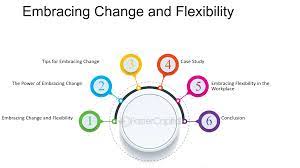Introduction:
The contemporary era encapsulates a whirlwind of advancements, innovations, and interconnectedness, shaping the fabric of modern lifestyles. This dynamic landscape intertwines technological advancements, rapid globalization, evolving career paradigms, and diverse societal expectations. Navigating this modernity involves striking a delicate balance between leveraging the opportunities presented by progress while safeguarding mental well-being, nurturing genuine connections amidst digital interactions, and prioritizing self-care amidst the relentless pace of life.
Challenges of Modern Living:
Technological Integration and Digital Overload:
The omnipresence of technology brings both connectivity and challenges. Balancing the benefits of connectivity with the need for digital detoxes to combat information overload and screen dependency is crucial for mental well-being.

Work-Life Integration and Career Pressures:
Evolving work structures demand a blend of personal and professional life. Managing work commitments, ambition, and the pursuit of a fulfilling career while maintaining a healthy work-life balance is a constant challenge.
Social Dynamics and Digital Relationships:
Digital connections have transformed social interactions. Nurturing meaningful relationships amidst digital connections, combating social isolation, and fostering authentic human connections pose challenges in the age of virtual connectivity.
Mental Health and Stress Management:
The fast-paced lifestyle often leads to stress, anxiety, and burnout. Prioritizing mental health, practicing stress management techniques, and seeking support are crucial in maintaining emotional well-being.
Strategies for a Balanced Lifestyle:
Mindful Technology Use:
Implementing technology boundaries, practicing digital detoxes, and fostering tech-free zones to strike a balance between digital engagement and real-life interactions.
Flexible Work Structures and Boundaries:
Establishing clear work-life boundaries, advocating for flexible work arrangements, and prioritizing self-care within work schedules to achieve a more harmonious professional and personal life.
Cultivating Genuine Connections:
Prioritizing face-to-face interactions, nurturing authentic relationships, and carving out quality time for family and friends to counteract the pitfalls of digital relationships.
Embracing Mindfulness and Self-Care Practices:
Incorporating mindfulness practices, engaging in hobbies, physical activities, and setting aside time for relaxation and rejuvenation to foster mental and physical well-being.
Embracing Change and Adaptability:
Continuous Learning and Adaptation:
Embracing a growth mindset, adapting to changes, and staying open to learning new skills and approaches in a rapidly evolving environment.

Setting Realistic Expectations:
Cultivating self-compassion, setting realistic goals, and acknowledging that imperfections are a part of the human experience to reduce self-imposed pressure.
Conclusion:
Navigating modernity necessitates a conscious and adaptive approach—a delicate harmony between embracing technological progress while safeguarding mental well-being, fostering genuine connections amidst digital interactions, and prioritizing self-care within the relentless pace of life. Embracing this balance allows individuals to lead fulfilling and purposeful lives amidst the complexities of the contemporary world.
This detailed exploration illuminates the complexities and nuances of modern lifestyles, offering insights and strategies to navigate this dynamic landscape while fostering a balanced and fulfilling life.
Career and Work-Life Integration:
Remote Work Adaptability:
Embracing remote work options, setting up conducive home offices, and establishing clear boundaries between professional and personal space to enhance productivity and maintain work-life balance.
Flexible Scheduling and Time Management:
Adopting flexible scheduling, time-blocking techniques, and prioritizing tasks to manage work efficiently while allocating dedicated time for personal pursuits, family, and relaxation.
Digital Wellness and Connectivity:
Tech Boundaries and Mindful Consumption:
Implementing mindful tech usage, setting boundaries for screen time, and curating digital spaces to minimize distractions and enhance focus on meaningful activities.
Digital Detox and Unplugging Practices:
Designating time for digital detoxes, unplugging from devices during leisure hours, and engaging in activities that foster presence and mindfulness, such as meditation or nature walks.
Mental Health and Self-Care:
Stress Reduction Techniques:
Incorporating stress reduction practices like deep breathing exercises, mindfulness meditation, or journaling to alleviate stress and enhance emotional resilience.
Prioritizing Sleep and Rest:
Recognizing the importance of quality sleep, establishing sleep routines, and creating conducive environments for rest to support mental clarity and overall well-being.
Relationships and Social Connection:
Quality Time with Loved Ones:
Allocating dedicated quality time for family and friends, fostering meaningful connections, and engaging in activities that promote genuine interactions and bonding.
Balanced Social Media Engagement:
Practicing mindful use of social media, setting boundaries for social media consumption, and curating online spaces that promote positivity and authentic connections.
Continuous Learning and Adaptation:
Skill Development and Growth Opportunities:
Engaging in continuous learning through online courses, workshops, or acquiring new skills that align with personal interests or career growth.
Embracing Change and Flexibility:
Cultivating adaptability, embracing change, and reframing challenges as opportunities for growth, fostering resilience and a positive mindset in navigating evolving circumstances.
Community Engagement and Contribution:
Volunteering and Giving Back:
Participating in community service, volunteering, or supporting causes that align with personal values, fostering a sense of purpose and contributing positively to society.
Networking and Support Systems:
Building supportive networks, engaging in professional or interest-based communities, and seeking mentorship or guidance to facilitate personal and professional growth.
These expanded strategies and approaches aim to provide a more nuanced understanding of navigating modern lifestyles, emphasizing the need for balance, adaptability, self-care, and meaningful connections in the contemporary world.



You must be logged in to post a comment.